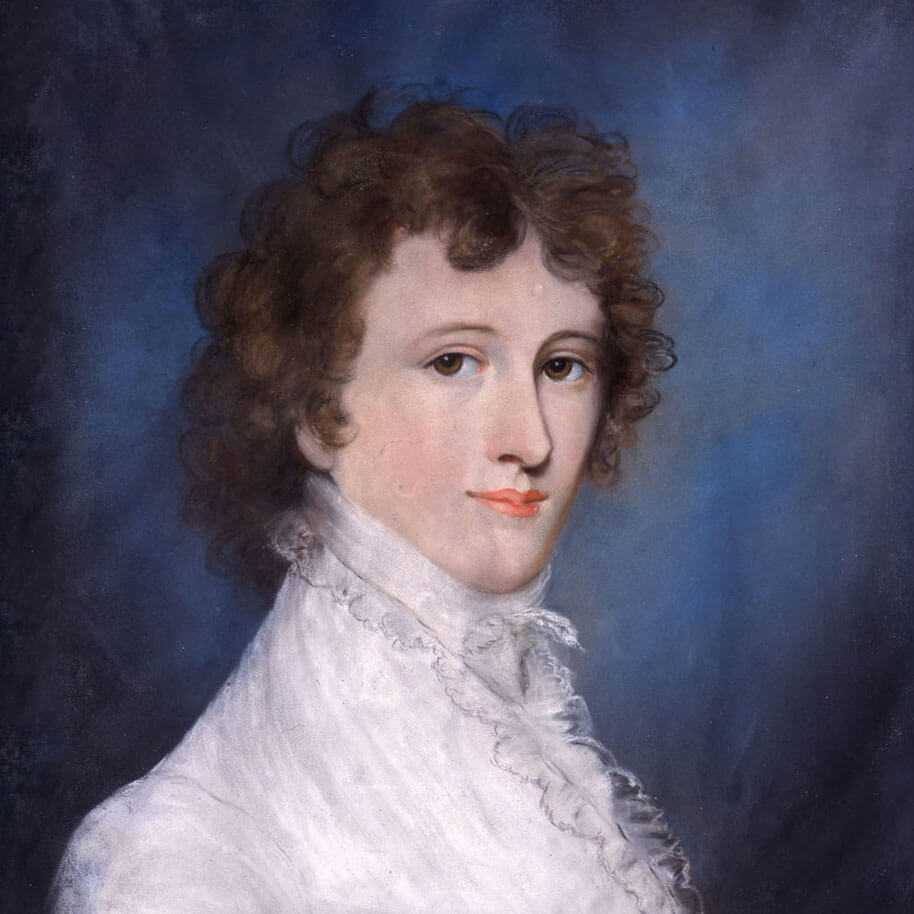The Role of Supreme Court Wives
The significant roles of Supreme Court wives during the early decades of the Court.
In the Supreme Court’s first decade, the wives of the Justices played an important role taking care of the children and the household while their husbands attended to Court business and traveled to preside over circuit courts in the regions to which they were assigned. Sarah Livingston Jay, the wife of the first Chief Justice John Jay, stayed home in New York to tend to their six children while John rode circuit in New England. The couple exchanged letters frequently, with Sarah reassuring him: “We make out very well.” She teased him about being capable of maintaining the home without him: “Ain’t you a little fearful of the consequences of leaving me so long sole mistress?”
Justice James Iredell’s wife, Hannah Johnston Iredell, came from their hometown of Edenton, North Carolina, to live with her husband in New York, initially the temporary capital, and then Philadelphia, which served as the temporary capital until 1800. The Court met there twice yearly for a decade, beginning in 1791. The Iredells hadn’t anticipated that James would be assigned to ride circuits for much of the year, often leaving Hannah alone in the capital, where she found it difficult to engage in the expected rituals of its social scene because of her introverted nature. She incurred “social debts” and wondered how she would get the “spirits” to return social calls, as was the custom for wives of government officials. Hannah wrote James when he was on circuit: “I have made no visits. I could not prevail on myself to run about the town alone after people whom I had never seen.” In 1793, she returned to Edenton with their children.
When the nation’s capital moved to Washington, D.C., in 1800, boarding houses opened to house and feed the growing population of government workers, including members of the Supreme Court. However, the city remained an undeveloped quagmire, lacking roads and the infrastructure to which high society men and women were accustomed. As sessions of the Supreme Court lasted only a month or two (few cases having yet percolated up for review), there was little incentive for the Justices to bring their wives and family from more developed cities when they came to hold sessions in Washington. Wives continued to stay home with their children, maintain their households and oversee family farms. Associate Justice William Cushing and his wife, Hannah Phillips Cushing, were an exception. They had no children, and she liked to accompany her husband on his circuit travels. She read aloud to him from books kept in special receptacles he had designed for his carriage.
Some wives acted as sounding boards for their husbands about legal matters. Chief Justice John Marshall often sought the advice of his wife, Mary Willis Ambler “Polly” Marshall. “Her judgment was so sound and so safe that I have often relied upon it in situations of some perplexity,” he wrote. “I do not recall ever to have regretted the adoption of her opinion. I have sometimes regretted its rejection.” Justice Joseph Story often shared stories from the Court with his wife, Sarah Waldo Wetmore Story; at one point writing that he would tell her more about a particular case when “there are some secrets of private history in it.” He relied on his confidential letters to his wife to sort out his thinking about cases. For example, he expressed concerns about the Supreme Court’s power of judicial review being diminished in Cherokee Nation v. State of Georgia (1831). He also consulted Sarah on her opinions of cases: “You ask, in your last letter that I would give you some intelligible account of the Georgia case…you will, from this statement, understand the case well enough to judge.” While we do not have a running dialogue between the couple as Sarah’s responses are missing, it is clear that she understood cases and precedents and helped to shape Justice Story’s legal outlook.
Tasked with establishing the law of the new nation, the first Justices to serve on the Supreme Court relied on their wives as a vital support system regardless of the time and distance they spent apart from one another.
Discussion Questions
- How did the lack of infrastructure in Washington, D.C. impact the families of Supreme Court Justices and other government officials? How did some Justices cope?
- What responsibilities did wives of Supreme Court Justices have as a result of their spouse’s job? What does this tell you about their abilities?
- Were the wives of Supreme Court Justices valued for their intellect? Explain.
- Why do you think the majority of letters and correspondence are mainly from the justices’ point of view? Why might the wives’ responses be missing?
Sources
Special thanks to author Natalie Wexler and the Society’s Director of Publications Clare Cushman for their review, feedback, and additional information.
Cushman, Clare. Courtwatchers: Eyewitness Accounts in Supreme Court History. Rowman & Littlefield Publishers (2011). Chapter 4.
Feature Image: Mary Ambler Marshall (1799). Courtesy of the Museum of Early Southern Decorative Arts.
Ginsburg, R and Laura W. Brill. Remembering Great Ladies: Supreme Court Wives’ Stories. Journal of Supreme Court History (1999). Vol 34, #3.
Story, William W. Life and Letters of Joseph Story: Volume II. Boston 1851. pp.43-45.
Supreme Court Historical Society. The Quarterly; Volume III No. 1, Winter 1981. “Residences of the Court: Past and Present Part II: The Capitol Years.”
